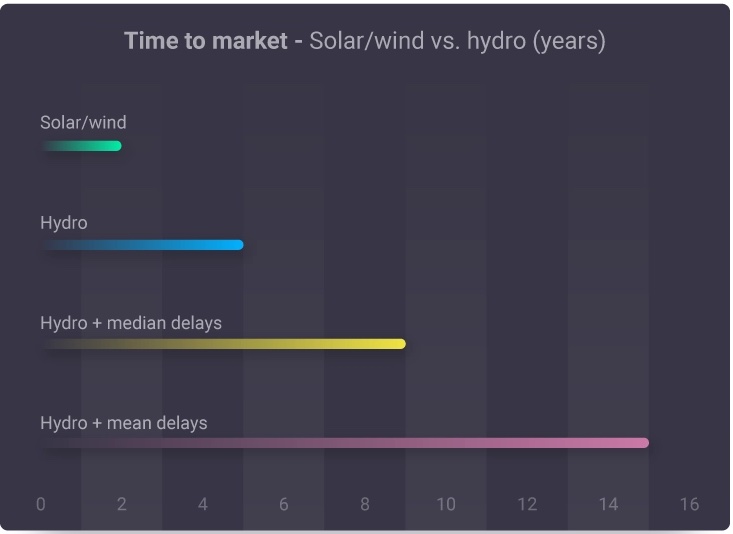For immediate release
OXFORD, UK and OAKLAND, US, August 25, 2021—A new geospatial assessment tool for hydropower, Riverscope, launched today. Riverscope was developed by TMP Systems in collaboration with International Rivers. It is the first comprehensive tool to assess often-overlooked environmental and social risks and connect them quantitatively to the commercial performance of hydropower projects.
The electricity produced by large-scale hydropower is often expensive financially in part because these dams are exposed to extraordinary social and environmental risk. Dams have significant and irreversible impacts on societies and ecosystems that also expose them to operational and reputational challenges. Yet the way projects are currently assessed systematically underestimates environmental, social, and governance (ESG) risks. Riverscope is designed to quantify these financial risks in order to improve energy planning and investment.
“In our work, we have frequently seen how unresolved environmental and social impacts cause project delays that inevitably result in cost overruns and severe or irreversible damage to communities, critically endangered species, and rivers,” said Maureen Harris, Program Director at International Rivers.
Riverscope has been applied to five pilot projects, with each assessment available at www.riverscope.org. The pilots include hydropower projects within Africa and Southeast Asia, including three dams planned on the Mekong. These assessments found that large hydropower is regularly associated with ESG risks that are extremely difficult to manage effectively and at a reasonable cost. This leads to long delays and budget overruns which, in turn, reduce the commercial value of these projects and increase the end costs of electricity from them. Partly as a result, large hydropower projects are often uncompetitive with alternative technologies like wind and solar by the time they eventually come to market.
“Our Riverscope pilots strongly suggest that assessment processes for hydropower are in urgent need of overhaul. Assessments of large projects fail to recognise the inextricable linkage of social, environmental, and commercial risks, which contributes to consistently poor decision-making in the sector. Solar and wind turn out cheaper than hydropower in all five pilots – the business case for many large dams is suspect. Most energy planners could certainly do more to exhaust competitive alternative energy options before committing to risky hydropower projects,” said Ben Bowie, Director of TMP Systems, the developer of the Riverscope assessment tool.
Riverscope combines geospatial analysis, financial modelling, and an in-depth qualitative investigation to provide a unique and comprehensive assessment of hydropower risks. It is designed to:
- Identify, mitigate, and avoid the most serious commercial risks
- Translate social and environmental risks into financial terms
- Evaluate competitive alternatives to hydropower that have better impact
Riverscope’s approach is grounded in a robust statistical process that has been tried and tested through TMP’s experience with Landscope. The analysis is based on the past performance of 281 dams, which were used to identify quantitative and statistically significant indicators of financial risks in hydropower development. Common and comparable financial metrics are then used to demonstrate the impact of these risks on a project’s financial viability. Having applied this methodology across five pilot projects, some of the findings include:

- Large dams regularly face long delays of between 4 to 10 years (see graphic) based on an examination of 281 cases. Riverscope’s methodology can use a dam’s location to estimate how long delays might be.
- Riverscope found that social and environmental challenges would reduce average Net Present Value (NPV) to negative 40%. The business case for these investments is very weak once a proper assessment has been made.
- Large hydropower is typically expensive and the idea of it as a cheap energy source is increasingly inaccurate. Electricity from the five pilot dams is likely to be 49% more expensive, on average, than locally available solar options per kWh. As time passes, hydropower becomes more expensive as alternatives become cheaper.
- Most large dams have severe ESG impacts that should put concessional finance out of reach, although this capital is still key in almost every hydropower deal. Among pilot projects assessed, Riverscope found that an average of 52,755 people were put at immediate risk of physical or economic displacement, with millions more substantially affected in areas like the Mekong.
Riverscope’s findings demonstrate the urgent need for better planning in the sector to avoid ESG as well as financial risks, which will result in better outcomes for all.
“TMP’s work in developing Riverscope to assess these risks and the costs to investors and developers in real terms represents a meaningful contribution toward better decision-making in the sector,” added Ms. Harris. “We look forward to engaging with these actors on how they can integrate the Riverscope tool into their planning.”
To attend the Riverscope launch webinar (August 25th, 9am ET, 2pm UK, 3pm CET), register here: intlrv.rs/riverscope2021. A recording of the webinar will also be uploaded here: https://www.youtube.com/user/internationalrivers.
For further information about Riverscope, the General Summary report, and five case study summaries, please visit www.riverscope.org.
Contacts:
Bonnie Barclay, Communications Manager, International Rivers (Publicist) (bbarclay@internationalrivers.org) +1 323 363 4874
Benedick Bowie, Director, TMP Systems (Developer) (ben.bowie@tmpsystems.net)
Josh Klemm, Policy Director, International Rivers (Editor) (jklemm@internationalrivers.org)
###

